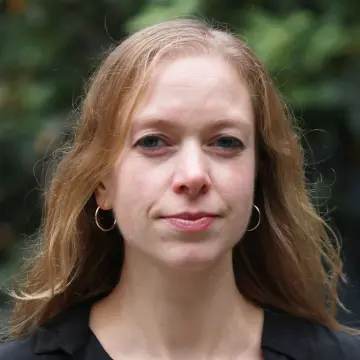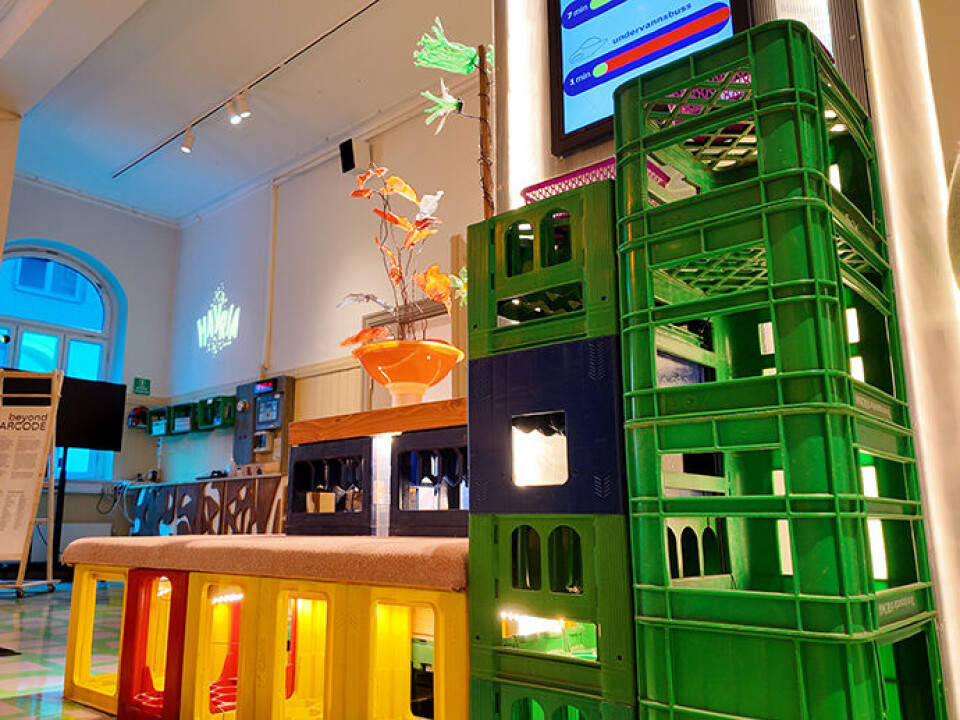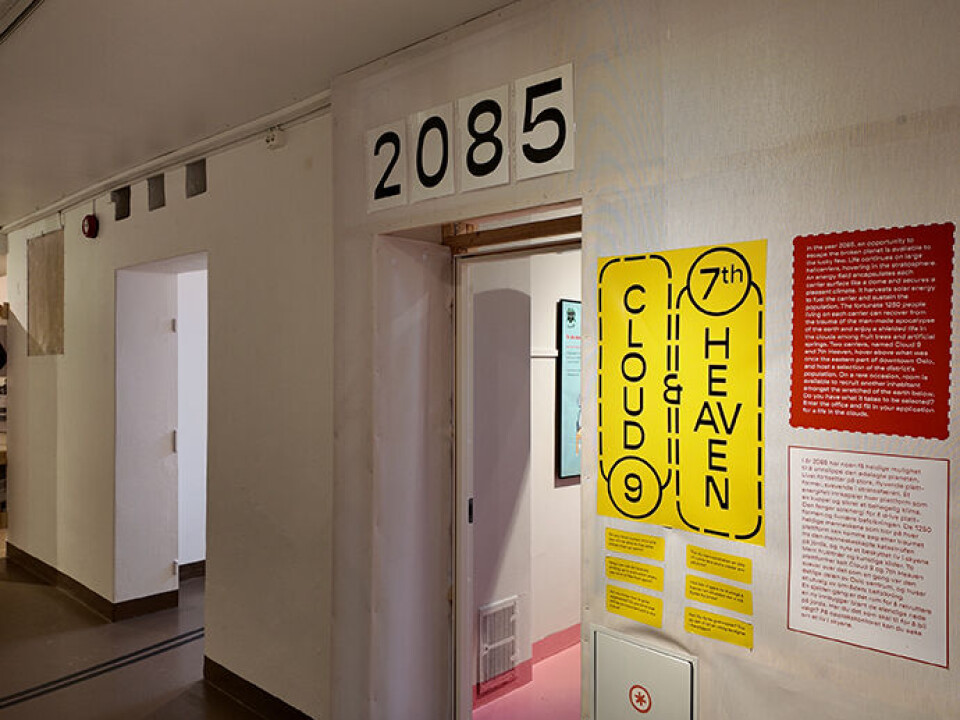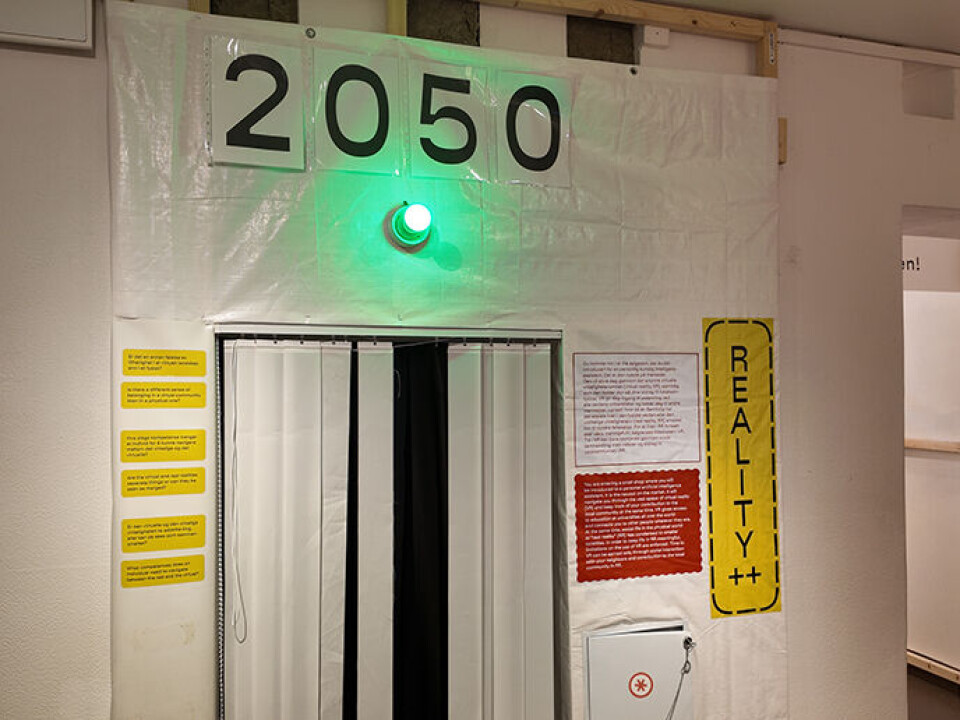THIS CONTENT IS BROUGHT TO YOU BY University of Oslo - read more

Envisioning a radically different future makes us more prepared
Authorities should look to creative visions of the future when making contingency plans. Researchers have now developed methods to explore people's thoughts about an uncertain future.
When researchers seek answers to their questions, they typically document and analyse information they have derived through observation, experiments, or work with historical sources.
They are cautious about predicting the future because we have no experience with it, yet.
But at the University of Oslo, some researchers are committed to exploring the future.
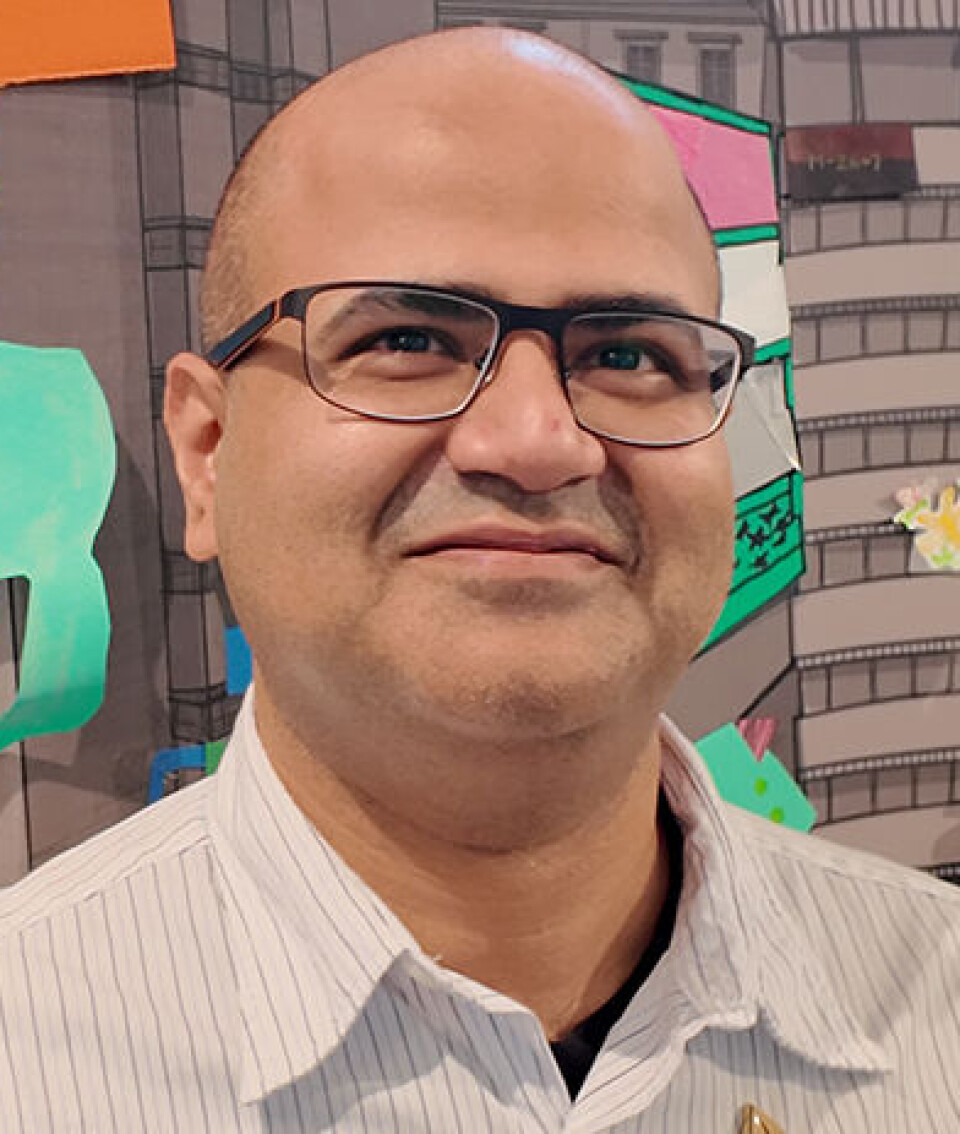
“We don't just ask what people envision, but how they imagine the future,” Bodhisattva Chattopadhyay says.
He leads a research organisation where researchers from six countries work together. They explore questions about climate, storytelling, artificial intelligence, and, not least, science fiction.
“We collaborate with artists, and the results of the research are not just articles and books but also fiction, films, dance performances, social media accounts, and an exhibition,” says Chattopadhyay.
Useful knowledge from the periphery
When we envision the future, what are our imaginations actually based on?
Some of it might come from projections and scenarios that politicians use to plan for the future.
In our time, these are filled with grim predictions about democracies in crisis, a planet ravaged by war and climate change, and an ageing population requiring more care than the welfare state can provide.
“Many people are also strongly influenced by popular culture, particularly science fiction. But cultural expressions from the Western and English-speaking world dominate,” Chattopadhyay points out.
Together with his research colleagues, he has held workshops for citizens from what he refers to as the periphery: from South America, Africa, Asia, and a small cold country in the north with 5.5 million inhabitants.
“The goal has been to create awareness that people envision the future differently depending on where they are in the world. And to demonstrate that it's indeed possible to envision alternatives to established notions,” he says.
To generate new knowledge, they have developed methods through workshops in 19 countries. They have met with artists, researchers, engineers, and UN employees. Most importantly, they have met ‘ordinary people.'
They will soon make these methods accessible for everyone to use.
Exhibition based on ideas from local youth
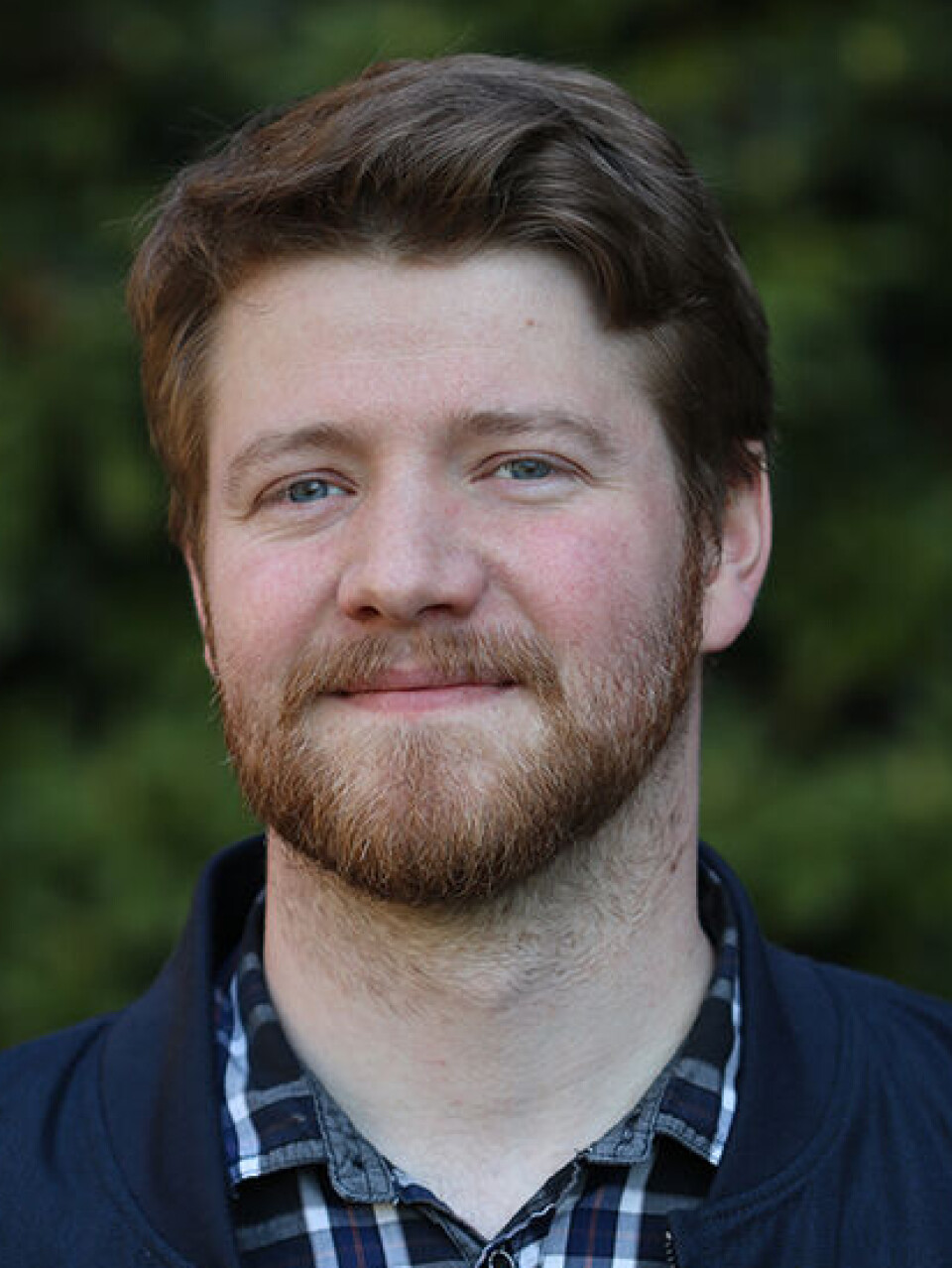
In Norway, the Beyond Barcode exhibition at the Oslo Museum is a tangible result of the research project. Here, the public can explore seven different future scenarios based on ideas from local Oslo residents.
“We maintained a completely open approach. During the workshops, we asked participants to envision the future in 30, 50 years, and even further into the future,” says museologist and cultural researcher Bergsveinn Thorsson.
He developed the exhibition together with Chattopadhyay, graphic designers, scenographers, and museum staff. The researchers were careful not to impose any directives; this was intended to be a creative process.
“On the surface, it looks familiar, particularly visually. Participants envisioned skyscrapers and hovercrafts, much like what you see in popular science fiction films. But if you look closely, you can spot some radical ideas,” Thorsson points out.
The underwater hotel Havria is one example. It is a luxury hotel, but for everyone. It can be a refuge for someone needing a break or for someone fleeing from war.
Thorsson explains that social differences became a central theme. The scenarios are about removing the limitations that exist today. In many ideas, technology solves problems, for example through robots.
The fear of climate change shapes many ideas about the future, and this is visible in the exhibition. For example, several scenarios are set in an Oslo submerged under water.
“But surprisingly, climate change is not the dominant theme – it's more about how we want to live after the climate crisis is resolved, or after we’ve adapted to different climates, for example with underwater public transport,” he says.
Museums showcase more than just the past
“At a museum, people often expect exhibitions about the past,” says Annelise Bothner-By.
Along with Anders Bettum, she is part of the curator team from Oslo Museum.
“So, when we exhibit the future, it may seem surprising. But museums are also concerned with preserving things for the future. And regardless of whether we work with the future or the past, the museum has a role in creating shared narratives that make experiences in our society relevant today,” she says.
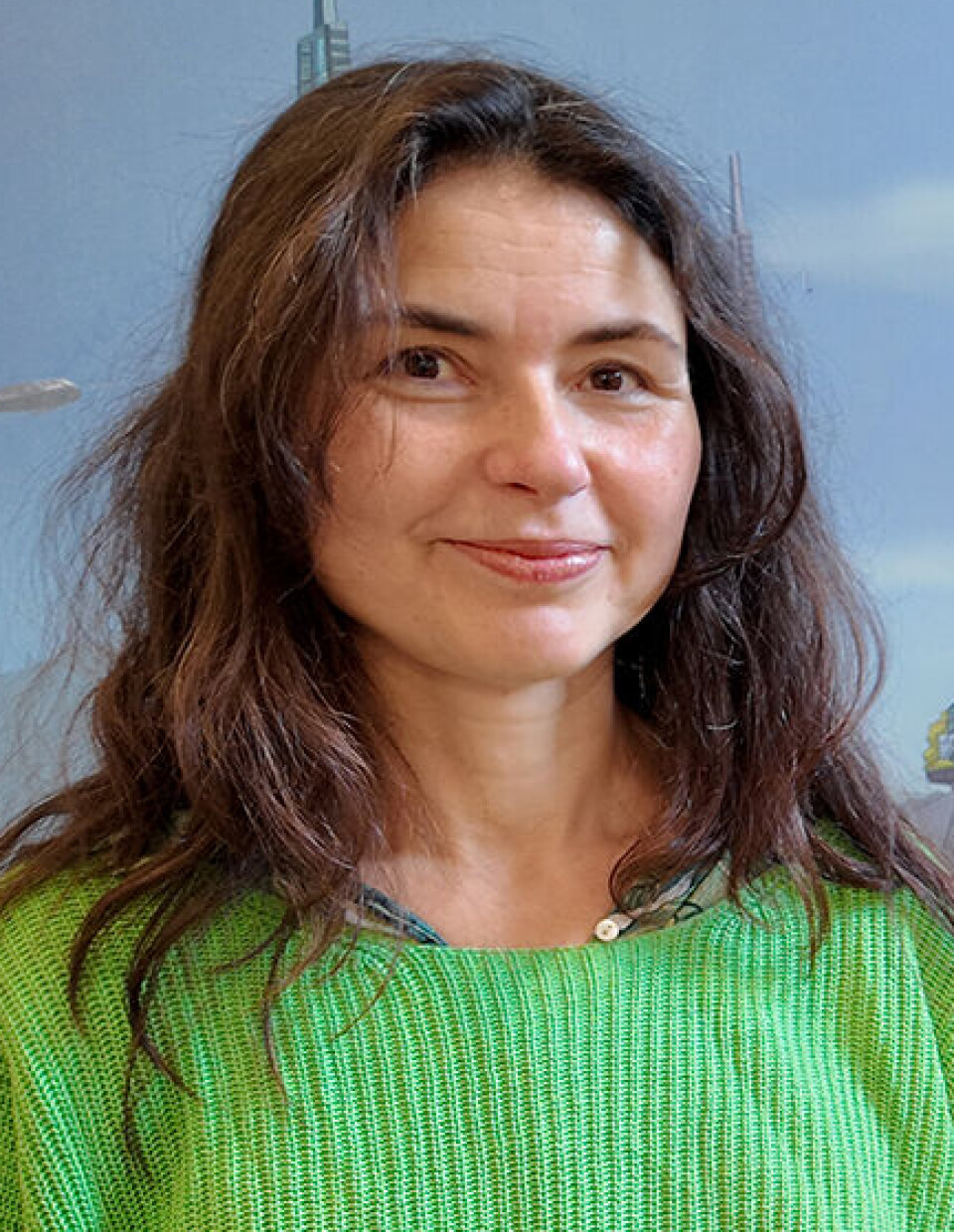
The curator describes working closely with researchers as fun and rewarding.
“Usually, you start with research and then create the exhibition afterwards to show what you've discovered. This is entirely different. Here, the exhibition work was also part of the research process,” she says.
Bothner-By explains that the future scenarios excite everyone from nursery school children to grandmothers. The public gets to participate in thinking about and creating visions for the future of the capital.
“Here, the identity of the sender is less important. Most of it is collectively created and constantly changing. The public can also contribute to changing the exhibitions,” she says.
Researchers contribute to UN 2.0
In 1987, the UN report Our Common Future, also known as the Brundtland Report, was released.
It brought sustainable development to the forefront of the international agenda and has been a foundation for the UN's work ever since. In 2021, UN Secretary-General Antonio Gutierrez launched a new vision: Our Common Agenda.
“It's a recognition that the sustainable development goals and a common future haven't worked, and that the world needs to agree on a set of forward-looking ideas instead,” says Bodhisattva Chattopadhyay.
The agenda includes 12 key proposals, one of which is to upgrade the UN.
This is where the research organisation comes in. The researchers are now collaborating with UN Global Pulse, tasked with developing a UN 2.0 – a new and improved UN capable of functioning even better.
“We contribute to one of the five priority areas, which is called strategic foresight. We do this by conducting workshops with our methods to achieve change and innovation across the UN system,” he says.
Imagining the future is a form of preparedness
According to Bergsveinn Thorsson, the methods the researchers have used align with a long tradition. It involves allowing the public to participate in decision-making processes and policy making.
“But you often get the feeling that it isn’t taken seriously,” he says.
In facing an unknown future, it can be crucial to bring different people together to rethink how we would respond in a radically different situation.
“It's about getting people to consider what we really want to happen, but also to imagine a wildly improbable scenario and think about how we would handle it,” he says.
The researcher has often been met with laughter when he mentions science fiction as a resource.
“It might involve aliens and other fantastical elements, but what makes a sci-fi film or book good is that it speaks to our current times. We have visions of apocalypse and crisis, but what does a carbon-neutral society really look like?" he says.
Thorsson points out that as it stands, we are in a climate crisis. Yet we continue doing the same things as before.
"With our methods, we aim to break free from the patterns we are trapped in and explore new possibilities,” he says.
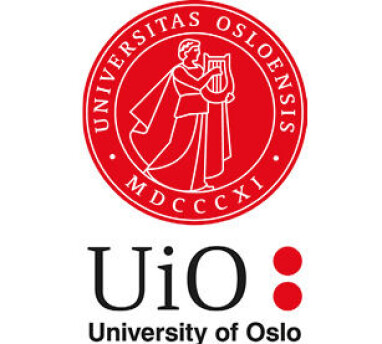
This content is paid for and presented by the University of Oslo
This content is created by the University of Oslo's communication staff, who use this platform to communicate science and share results from research with the public. The University of Oslo is one of more than 80 owners of ScienceNorway.no. Read more here.
More content from the University of Oslo:
-
Queer opera singers: “I was too feminine, too ‘gay.’ I heard that on opera stages in both Asia and Europe”
-
Putin’s dream of the perfect family
-
How international standards are transforming the world
-
A researcher has listened to 480 versions of Hitler's favourite music. This is what he found
-
Researcher: "AI weakens our judgement"
-
New, worrying trend among incels, according to researcher







